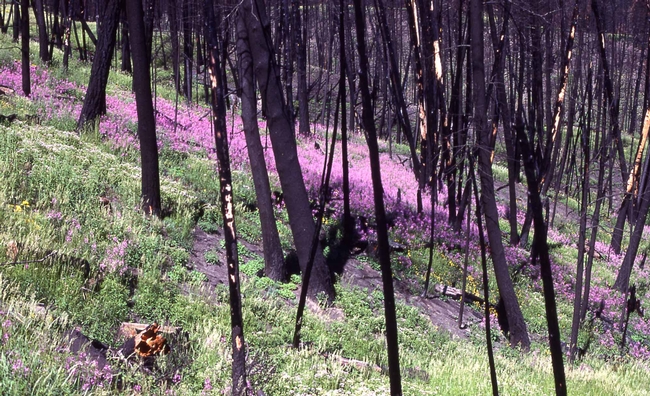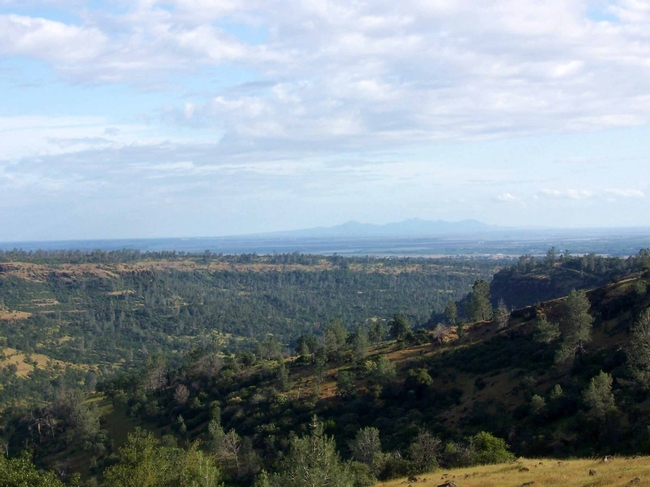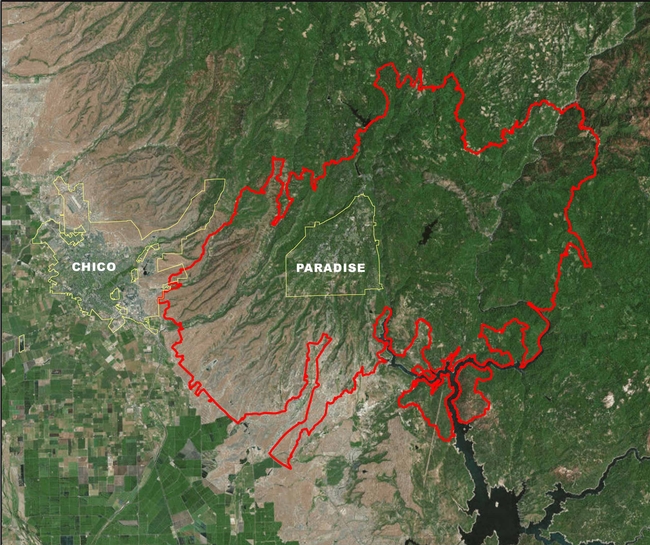By Laura Lukes, UC Master Gardener of Butte County, February 8, 2019
It didn't take long. Soon after the first post-Camp Fire rains, there was green in the burned area. Along lower Skyway, a blanket of soft verdure overlay the harsh scars of incineration. While the people of Paradise rebuild and replant in the developed areas, what will grow back in the foothill grasslands and the forested areas?

Farther up the shoulder of the Sierra Nevada, starting at about 3,000 feet, the ecosystem shifts to the lower montane forest zone. Tree species thriving in this zone are a diverse mix of ponderosa pine, California black oak, sugar pine, incense cedar, and white fir.

- Fire-stimulated germination (ceanothus, manzanita)
- Adventitious or latent axillary buds, dormant until the next growing season or remaining latent for years (oaks, ceanothus)
- Lignotubers - rounded woody growth at or below ground level on some shrubs and trees that grow in areas subject to fire or drought, containing a mass of buds and food reserves (manzanita, chamise)
- Fire resistant bark (ponderosa pine, Douglas fir, cedar)
- Serotinous cones (seeds release in response to an environmental trigger such as fire) and fire-stimulated seed release (several pine species)
Plant recolonization after a fire or other major disturbance is known as secondary succession. In general, and broadly speaking, first the “pioneer species” appear, and the landscape is dominated by small flowering herbaceous plants which die back with the summer dry period. So the usual suspects that bloom each spring and early summer in our area, like lupine, poppy, and monkeyflower, should be back. We may also see the spectacular fireweed (Chamerion angustifolium, also classified as Epilobium angustifolium), often one of the first colonizers of the soil following a fire. After the 2016 Lake County fires, fireweed's beautiful magenta blooms dotted the hillsides along State Route 20.

Appearing next in post fire plant succession are the woody shrubs whose seeds and/or lignotubers survived beneath the burned soils. We can expect to see manzanita, ceanothus, and blue oak seedlings, and perhaps sprouts from the few bushes that weren't completely incinerated. The buckeye may come back, along with some of the other oak species listed above.
In the archetypal secondary succession schematic for these ecosystems, pines appear next on the landscape timeline. But a recent study conducted jointly by UC Davis and the US Forest Service surveyed more than a dozen burn sites in California and found that over 40% of pine tree forests did not successfully regenerate after a large, hot fire. Pine trees survive better after moderate, slow burning fires that kill the understory but do less damage to taller trees. In addition, high intensity burns can kill most trees in an area, so there may not be any left to drop seeds to start a new stand. Pines that do sprout have to compete with the shrubs that have developed post-fire survival strategies.
As noted in the Sierra Nevada Ecosystem Project, 1996 report, “plant responses to fire vary and are often determined by a complex interaction among external factors such as temperature, soil moisture, and heat duration…and season of burn.”
What's different now? What's the overriding “external factor” in this case? It's the sheer intensity of this latest round of Northern California fires, and the attendant, albeit temporary, damage to the soils. Only time will tell which blend of survivors will return to create the green in the Camp Fire burn.
Aerial Footprint of the Camp Fire
Source: Esri, DigitalGlobe, GeoEye, Earthstar Geographics, CNES/Airbus DS, USDA, USGS, AEX, Getmapping, Aerogrid, IGN, IGP, swisstopo, and the GIS User Community